NASA announced that assembly of the second lunar rocket, SLS (Space Launch System), has begun at the Kennedy Space Center in Florida. The first rocket of the Artemis program launched to the Moon on November 16, 2022 with the Orion spacecraft in unmanned mode. Two years later, NASA began assembling a rocket to fly around the Earth’s moon with a crew of four astronauts. If everything goes according to plan, the launch will take place in about a year.
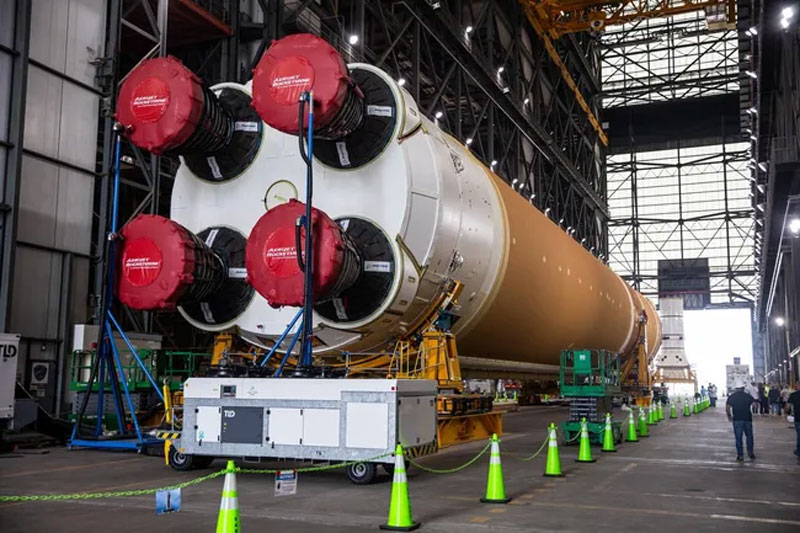
In the foreground is the first stage of the SLS, manufactured by Boeing. The aft element of the accelerator is visible at the entrance to the hangar. Image source: NASA
Earlier this year, the first stage of the Artemis 2 rocket, manufactured by Boeing, was delivered to the assembly shop in Florida. But assembly began with the installation of the first (aft) segments of the side solid rocket boosters, manufactured by Northrop Grumman, on the mobile platform. To launch, the mobile platform will deliver the assembled rocket from the hangar to the launch pad, keeping it in an upright position the entire time along the way. From the same platform the rocket launches into space. Now only the first stage of this epic has begun – the installation of the first segments of accelerators on the platform.
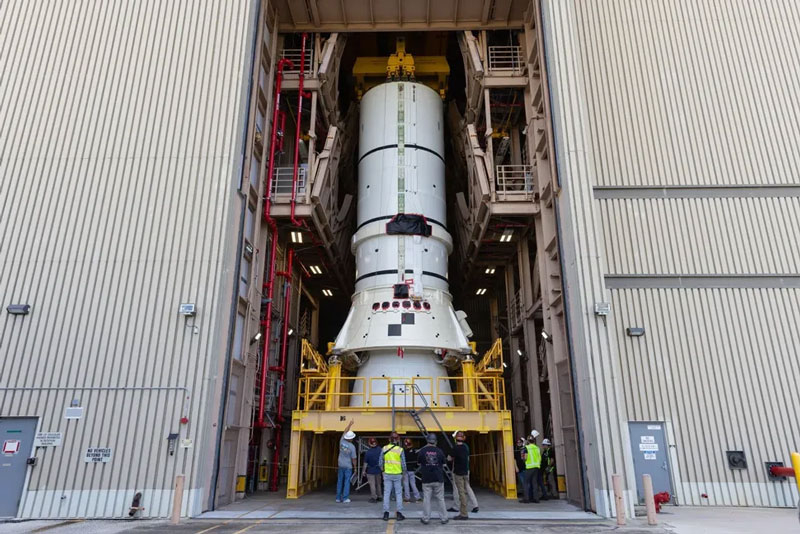
The aft segment of the left accelerator of the SLS rocket
Engineers placed the first segment of the left accelerator on the platform. The right aft segment will then be installed. Each solid rocket booster consists of five segments and will have a height of 54 m. The SLS rocket for the Artemis 2 mission will be equipped with two boosters, which will provide it with 75% of the thrust at launch. The hangar is also testing the Orion spacecraft for this mission. Some time ago he was placed in a pressure chamber for testing under vacuum conditions.
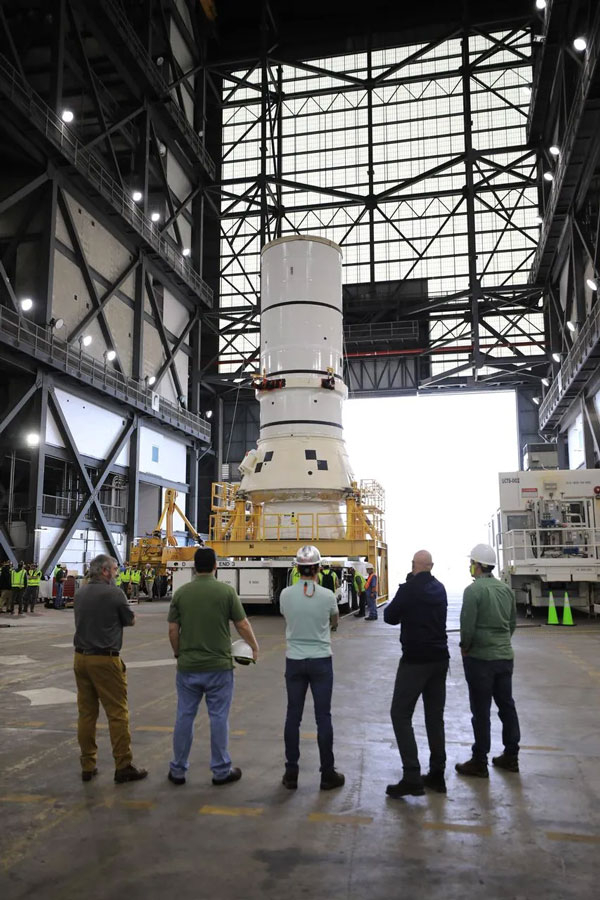
The Artemis 2 mission should have taken place earlier. In the winter of 2024, it was announced that the flight would be postponed. One of the reasons for the transfer may be a problem with the ship’s heat shield. During the process of returning the unmanned Orion to Earth after flying around the Moon, its heat shield, instead of evenly burning, in some places fell off in whole pieces. This circumstance makes one feel worried about the fate of the crew. A final decision on the screen will be made in January 2025, when a change in NASA leadership will be announced. But the ship has already been assembled for the flight, and remaking the heat shield means its partial disassembly, which in itself can delay the mission.
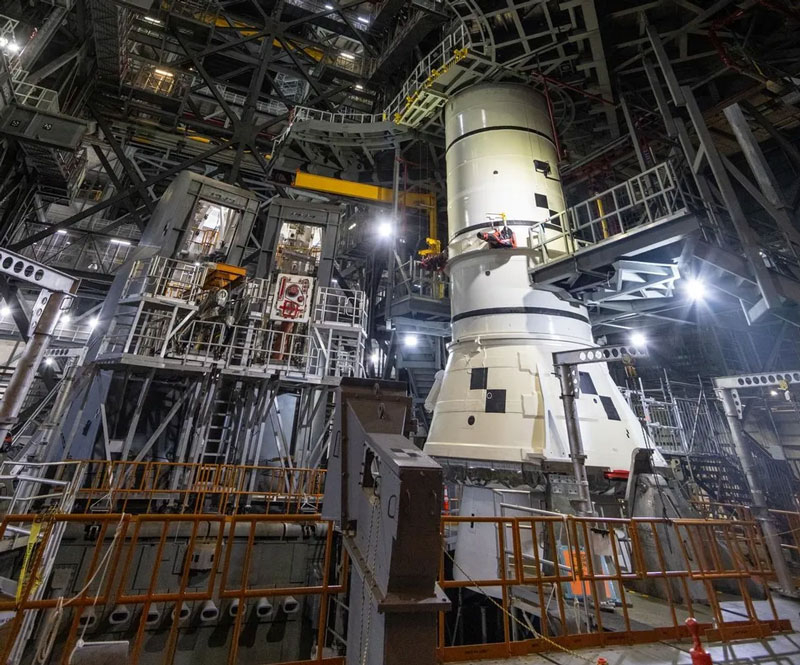
On mobile platform
Apparently, no one will redo the ship’s heat shield. Otherwise, the rocket assembly simply would not have begun. All components have a limited service life, including solid rocket booster parts. And if the rocket has begun to be assembled, it means it should fly into space in about a year, or the launch will be canceled altogether, like the entire Artemis lunar program in its current form, and this may well happen after the new US President, Donald Trump, comes to the White House .
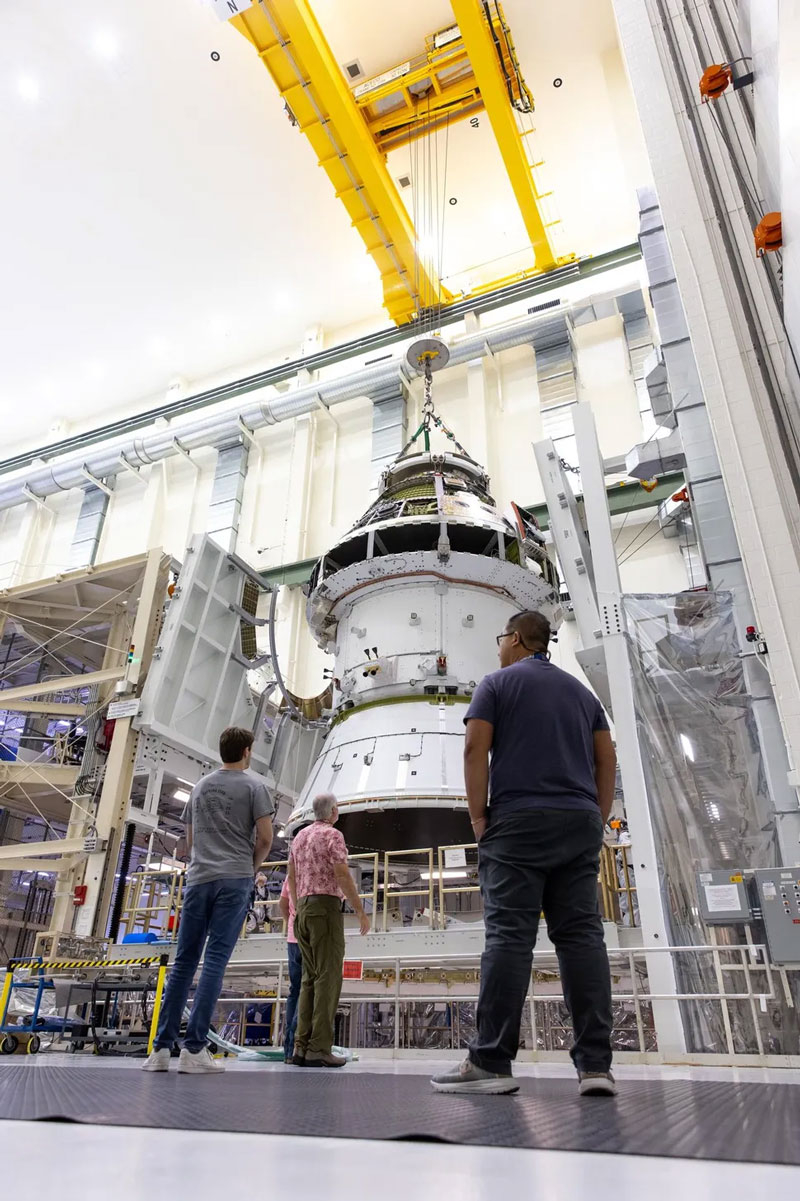
Orion is lifted by crane into the pressure chamber